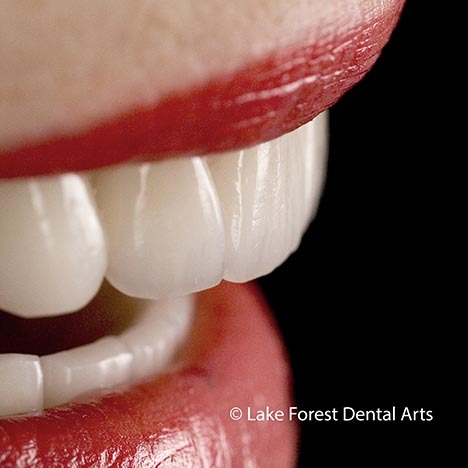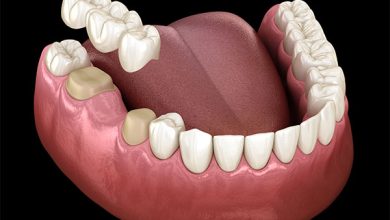What are the Disadvantages of Dental Bridges? Learn about the Potential Problems and Drawbacks

The disadvantages of dental bridges include the risk of dislodging, sweet sensitivity, breakage, gum disease and bone loss, and chewing or biting sensitivity. These potential problems can affect the functionality and longevity of dental bridges.
Dislodging And Easy Fixes
One of the potential problems of dental bridges is the risk of dislodging. While it can be a stressful experience to have a restoration fall out of your mouth, the good news is that it is usually easy to fix. Dentists can often reattach the bridge or create a new one without too much trouble.
Another disadvantage of dental bridges is that they may cause sweet sensitivity. This means that consuming sugary foods and drinks could lead to discomfort. However, this issue can typically be managed with proper dental care and treatment.
Dental bridges can also be prone to breakage, especially if they are subjected to excessive force. It is important to be cautious when biting down on hard or crunchy foods to avoid damaging the bridge.
In some cases, dental bridges can contribute to gum disease and bone loss. This is because bridges can make it more difficult to thoroughly clean between the teeth and gums, leading to a buildup of plaque and bacteria. Regular professional dental cleanings and diligent oral hygiene practices are essential to minimize this risk.
Lastly, some individuals may experience chewing or biting sensitivity with dental bridges. This sensitivity is often temporary and can be managed with the help of your dentist.
Sweet Sensitivity
Disadvantages of dental bridges include the risk of dislodging, sensitivity to sweet foods, breakage, gum disease and bone loss, and chewing or biting sensitivity. Proper oral hygiene practices can help mitigate these issues.
| Sweet Sensitivity |
| Sensitivity to sweetness can be a potential drawback of dental bridges. Some patients may experience increased sensitivity to sweet foods and beverages after getting dental bridges. This can be uncomfortable and may require adjustments or additional dental care. It is important to communicate any discomfort to your dentist so that they can address it appropriately. Additionally, the process of getting dental bridges may cause temporary sensitivity to chewing or biting. This is usually temporary and should subside over time. However, it is important to follow any post-treatment care instructions provided by your dentist to minimize any potential discomfort. Overall, while dental bridges can be a beneficial solution for replacing missing teeth, patients should be aware of the possibility of sweet sensitivity and discuss any concerns with their dentist. |
Breakage
Disadvantages of dental bridges include the potential for breakage and the risk of gum disease and bone loss. Sweet sensitivity and chewing or biting sensitivity can also be drawbacks. However, these issues can generally be addressed and managed by a dental professional.
| Disadvantages of Dental Bridges |
|---|
| Potential Problems or Disadvantages of Dental Bridges |
|
| The Pros & Cons of Dental Bridges |
|
| The Pros and Cons of a Dental Bridge |
|
| Dental Bridges – Advantages and Disadvantages |
|
| Major Pros and Cons of Dental Bridges |
|
| The Pros & Cons of Dental Bridges |
|
| To Bridge or Not to Bridge: A Comprehensive Look at the Pros and Cons of Dental Bridges |
|
| Disadvantages of Dental Bridges: What You Should Consider |
|
| Does food get under a dental bridge? |
|
| Do dental bridges cause problems? |
|
Gum Disease And Bone Loss
Gum disease and bone loss are potential disadvantages of dental bridges. The bridge can trap food and bacteria, leading to gum disease and potentially causing bone loss in the surrounding area. It is important to maintain proper oral hygiene practices to minimize these risks.
Potential Problems With Gum Disease
Gum disease and bone loss are potential problems that can arise with dental bridges. Gum disease, also known as periodontal disease, is a bacterial infection that affects the gums and bone supporting the teeth. If left untreated, gum disease can lead to bone loss, which can weaken the supporting structures of dental bridges.
When gum disease and bone loss are present, the long-term impact on oral health can be significant. The compromised gum and bone tissues can affect the stability and longevity of dental bridges. Additionally, gum disease can cause inflammation and discomfort in the mouth, making it difficult to properly maintain oral hygiene.
Chewing Or Biting Sensitivity
Dental bridges can lead to chewing or biting sensitivity, as the bridge may put pressure on adjacent teeth. This can cause discomfort while eating or biting down.
| Disadvantages of Dental Bridges |
| 1. Dislodging: Although it can be stressful to have any restoration fall out of your mouth, it is easy to fix. |
| 2. Sweet Sensitivity: Some people may experience increased sensitivity to sweet foods and drinks after getting a dental bridge. |
| 3. Breakage: Dental bridges can break if not properly cared for, leading to the need for replacement or repair. |
| 4. Gum disease and bone loss: Poor oral hygiene or improper placement of the bridge can contribute to gum disease and bone loss. |
| 5. Chewing or biting sensitivity: Some individuals may experience sensitivity when chewing or biting due to the presence of a dental bridge. |
| 6. Impact on eating habits: Dental bridges may require dietary adjustments, such as avoiding sticky or hard foods, for optimal longevity. |

Credit: lakeforestdentalarts.com
Maryland Bridges And Damage To Healthy Teeth
| Potential Problems or Disadvantages of Dental Bridges |
|
The disadvantages of dental bridges should be considered before opting for this restoration option. While dislodging can be fixed easily, there may be increased sweet sensitivity and a risk of breakage if not properly cared for. Gum disease and bone loss can occur if proper oral hygiene is not maintained. Some patients may also experience chewing or biting sensitivity after getting a dental bridge. Maryland bridges, in particular, can cause permanent damage to healthy teeth due to the attachment of metal to the back of the teeth. Additionally, food and bacteria can get trapped between the bridge and the gum line, making it harder to keep clean. It is important to weigh these potential disadvantages against the benefits before deciding on a dental bridge.
Food And Bacteria Build-up
One disadvantage of dental bridges is that they can trap food and bacteria between the bridge and the gum line, making it more difficult to maintain oral hygiene. Proper brushing and flossing can help reduce the risk of food debris getting stuck under the bridge.
|
Future Damage And Maintenance
Of future damage to the abutment teeth, as well as the potential risk for bacteria and plaque buildup within the bridge or crown. Additionally, dental bridges can trap food and bacteria between the bridge and the gum line, making it more difficult to maintain proper oral hygiene.
| Potential Problems or Disadvantages of Dental Bridges: |
| – Dislodging: Although it can be stressful to have any restoration fall out of your mouth, it is easy to fix. |
| – Sweet Sensitivity |
| – Breakage |
| – Gum disease and bone loss |
| – Chewing or biting sensitivity |
| – Future damage to the abutment teeth can compromise the bridge |
| – Risk of bacteria and plaque accumulation inside the bridge or crown |
| – Maintenance and care required for long-term efficacy |
Frequently Asked Questions Of What Are The Disadvantages Of Dental Bridges
Does Food Get Under A Dental Bridge?
Food particles can get trapped under a dental bridge, but proper oral hygiene practices like regular brushing and flossing can minimize this issue. However, if not cleaned properly, food debris may accumulate and pose a risk of decay or gum disease.
Do Dental Bridges Cause Problems?
Dental bridges can cause problems such as dislodging, sweet sensitivity, breakage, gum disease, bone loss, and chewing sensitivity. Traditional bridges may weaken surrounding teeth and increase the risk of decay or damage to the crowned teeth. Regular maintenance and oral hygiene are necessary, and eventually, bridges may need to be repaired or replaced.
What Is The Downside Of A Bridge?
The downside of a bridge includes the potential for decay, misalignment of teeth, and degradation of the underlying bone. Regular oral hygiene practices can prevent food particles from getting trapped under the bridge. Traditional bridges may require reduction of surrounding teeth, weakening them, and eventually needing repair or replacement.
What Is The Side Effect Of Dental Bridge?
Disadvantages of dental bridges include the risk of dislodging, sweet sensitivity, breakage, gum disease and bone loss, and chewing or biting sensitivity. Dental bridges can also trap food and bacteria, require drilling of teeth, and may lead to future damage or decay in surrounding teeth.
Regular oral hygiene practices can help reduce these risks.
Conclusion
Dental bridges do come with several disadvantages that need to be considered. Dislodging of the restoration can occur, but it is easily fixable. Sweet sensitivity and breakage are also potential issues. Furthermore, gum disease and bone loss can occur over time.
Additionally, chewing or biting sensitivity may be experienced. It’s important to weigh these potential problems against the advantages of dental bridges to make an informed decision about your oral health.



